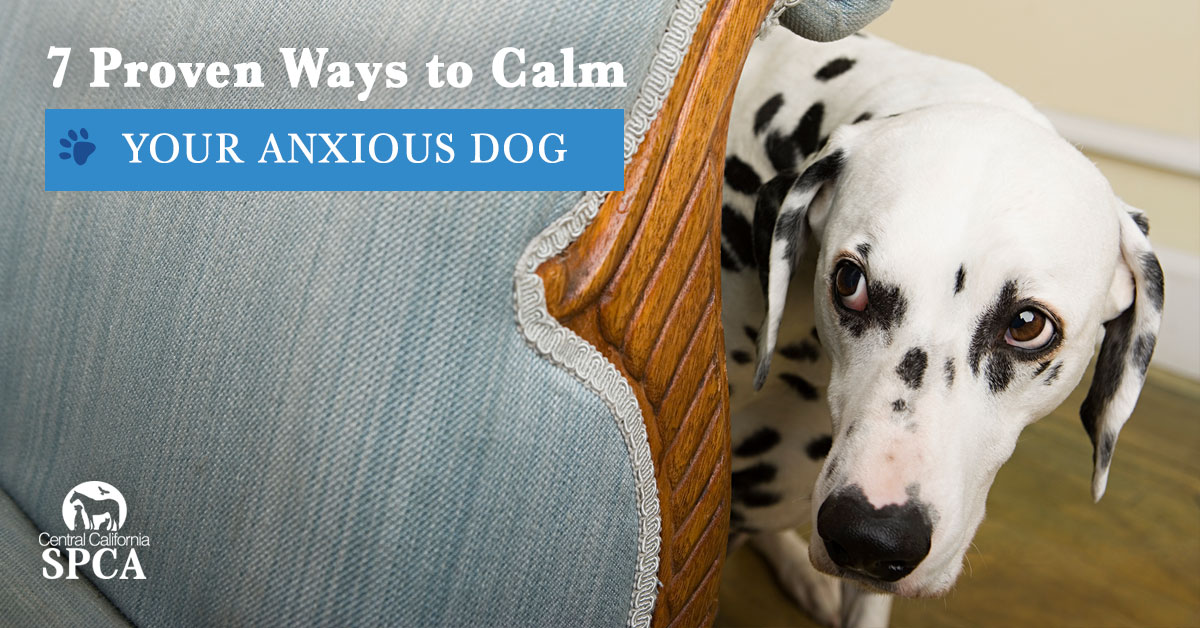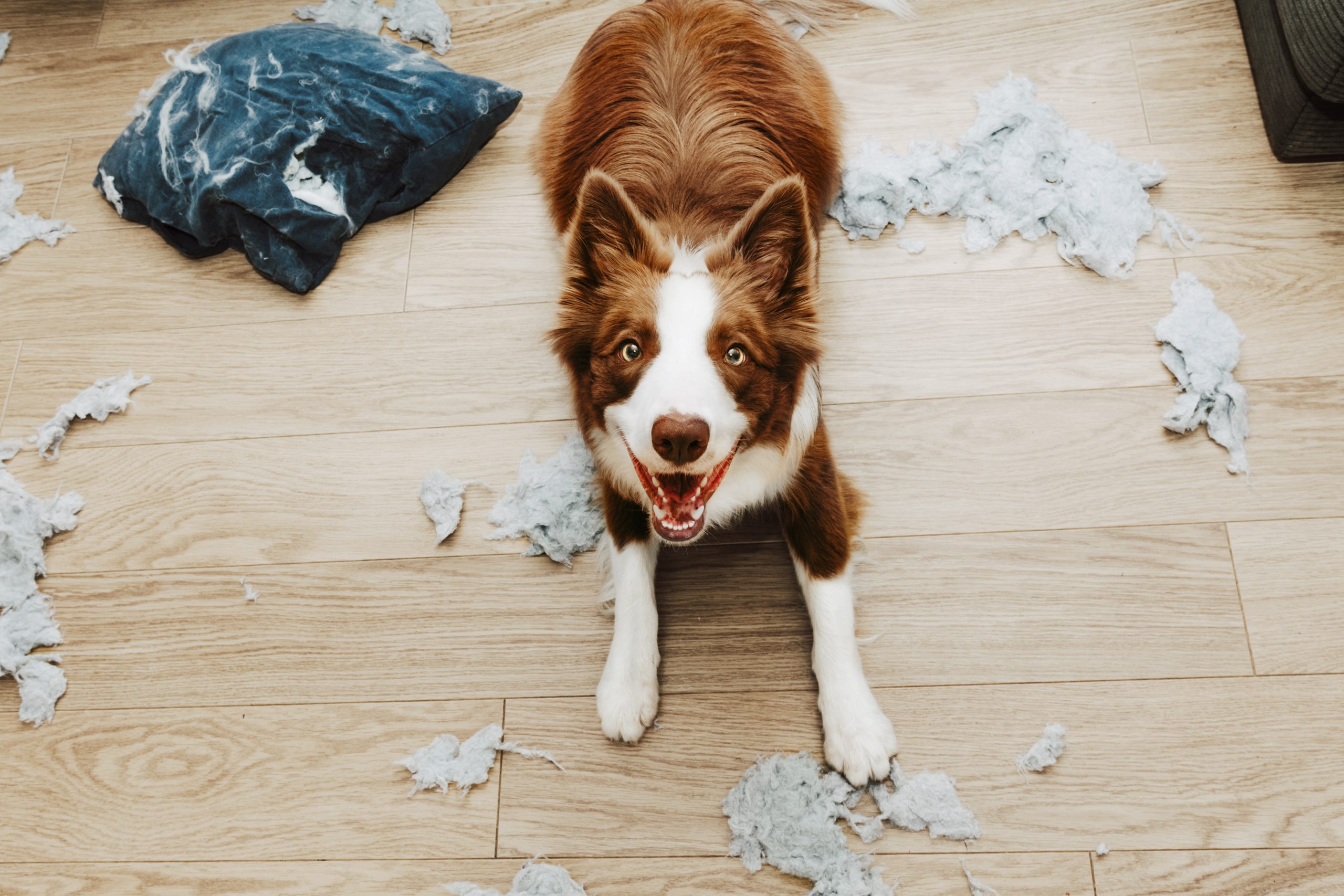To ease separation anxiety in your dog, set a routine, seek professional help, consider a second pet, prioritize physical activity, exercise your dog, never punish your dog, and play with your dog while staying connected to them. Separation anxiety can be distressing for both dogs and their owners, but with these easy steps, you can help alleviate your dog’s anxiety and create a more harmonious environment.
By establishing a consistent routine, providing mental and physical stimulation, and seeking professional guidance when needed, you can support your dog in overcoming separation anxiety and promoting relaxation during their alone time. Additionally, incorporating playtime and staying connected to your pet can strengthen your bond and alleviate their anxiety.
Remember, patience and understanding are key in addressing separation anxiety in your beloved furry friend.
Understanding Separation Anxiety In Dogs
Separation anxiety is a common issue that many dogs experience when they are left alone. It is characterized by a dog’s excessive distress and anxiety when separated from their owners or primary caregivers. Understanding the root causes and identifying the symptoms of separation anxiety is crucial in order to provide the appropriate care and support for your furry friend.
Symptoms Of Separation Anxiety
Recognizing the symptoms of separation anxiety can help you determine if your dog is suffering from this condition. Some common signs and behaviors include:
- Vocalization, such as howling, barking, or whining excessively when alone
- Destructive behavior, like chewing on furniture, scratching doors, or digging
- Pacing back and forth or constantly following you around when you are home
- House soiling, even if your dog is potty trained
- Excessive drooling or panting
Causes Of Separation Anxiety
There can be several factors that contribute to the development of separation anxiety in dogs. Some common causes include:
- Change in routine or environment
- Previous traumatic experiences, like abandonment or being re-homed
- Lack of socialization or being overly dependent on their owners
Effects Of Separation Anxiety On Dogs
Separation anxiety can have negative effects on your dog’s overall well-being and quality of life. Some of the possible effects include:
- Increased stress and anxiety levels
- Physical health issues, such as weight loss, digestive problems, or self-injury
- Behavioral problems, like aggression or excessive barking
- Strained relationship with the owner
Understanding the symptoms, causes, and effects of separation anxiety in dogs is the first step in helping your furry friend overcome this challenging condition. By providing the proper care, support, and training, you can help ease their distress and ensure their well-being.

Credit: www.amazon.com
Step 1: Set A Routine
Establishing a routine is crucial when it comes to easing separation anxiety in your dog. Dogs thrive on predictability and structure, and having a consistent schedule can help to create a sense of security and stability for your furry friend. Here are three key aspects to consider when setting a routine:
Establish A Consistent Schedule
To help your dog feel more at ease when you’re not around, it’s important to establish a consistent schedule for their daily activities. This includes regular walking times, play sessions, and designated rest periods. By adhering to a consistent schedule, your dog will come to expect and anticipate these activities, reducing their anxiety levels when you’re not there.
Stick To Regular Meal Times
Dogs love routine, and meal times are no exception. Feed your dog at the same times each day to establish a sense of predictability. This can help them feel more secure and less anxious when you’re away. Additionally, make sure to provide a quiet and calm environment during meal times to create a positive association with eating.
Create A Pre-departure Routine
Having a pre-departure routine can help signal to your dog that you’re leaving, making the separation less abrupt. This routine can include simple actions like grabbing your keys, putting on your shoes, or packing up your bag. By consistently performing these actions before leaving, your dog will start to understand that these cues do not necessarily mean a long period of separation.
Remember, a routine takes time to establish, so be patient and consistent. Stick to the schedule as closely as possible, even on weekends or during holidays. With time, your dog will learn to rely on the routine and feel more secure when you’re not around.
Step 2: Seek Professional Help
Dealing with separation anxiety in your dog can be a challenging journey, but seeking professional help can make a significant difference in your dog’s well-being. Consulting with a veterinarian and considering working with a dog trainer are crucial steps in easing your dog’s separation anxiety.
Consult With A Veterinarian
When it comes to your dog’s mental health, a veterinarian can provide valuable guidance and support. They can diagnose and determine the severity of your dog’s separation anxiety and recommend appropriate treatment strategies. Additionally, they can rule out any underlying medical conditions contributing to the anxiety.
Consider Working With A Dog Trainer
A dog trainer specializing in separation anxiety can be an invaluable resource for you and your furry friend. They have the knowledge and expertise to design a tailored training plan to help your dog overcome their anxiety. A dog trainer can teach you effective techniques to reinforce positive behaviors and gradually desensitize your dog to being alone.
Working with a professional can provide the necessary structure and consistency that your dog needs to overcome separation anxiety. Here are some benefits of seeking professional help:
- Expertise: A dog trainer understands the nuances of separation anxiety and can provide specific strategies to address your dog’s needs.
- Customized Approach: Each dog is unique, and a dog trainer can develop a personalized training plan based on your dog’s temperament and triggers.
- Support and Guidance: A professional can offer ongoing support and guidance throughout the training process, helping you stay on track and make necessary adjustments.
Remember, seeking professional help is not a sign of failure. It shows your dedication to your dog’s well-being and your willingness to explore all available options. Together with a veterinarian and a dog trainer, you can provide the support and tools your dog needs to overcome separation anxiety.

Credit: www.ccspca.com
Step 3: Consider A Second Pet
Consider adopting a second pet to help ease separation anxiety in your dog. Having a companion can provide them with comfort and reduce their distress when you’re not around.
If your dog is struggling with separation anxiety, one option to alleviate their distress is to consider getting a second pet. Introducing another furry friend into your household can provide companionship and help distract your dog from their anxiety when you’re not around. However, before making the decision to bring home another dog, it’s important to consider both the benefits and the considerations that come with having multiple pets.
Benefits Of Having Another Dog
There are several benefits to having another dog in your home when dealing with separation anxiety:
- Companionship: Having a playmate can help keep your dog occupied and decrease their feelings of loneliness when you’re not there.
- Distraction: With another dog around, your anxious pup may be more focused on their new friend, which can take their mind off their anxiety.
- Learn from Each Other: Dogs are social animals and can learn from each other’s behavior. Your anxious dog may take cues from their confident companion and learn to relax and feel more secure.
Considerations Before Getting A Second Dog
Before you rush to adopt another furry friend, there are a few considerations to keep in mind:
- Compatibility: Ensure that the new dog you bring home is compatible with your current dog’s temperament and energy level. Introducing two dogs who clash can worsen the situation.
- Financial Responsibility: Owning multiple dogs means additional costs for food, veterinary care, and other expenses. Make sure you’re prepared for the increased financial responsibility.
- Space: Your home should have enough space to comfortably accommodate two dogs. Consider whether your living situation is suitable for multiple pets.
- Time Commitment: Having two dogs requires double the time and attention. Make sure you have enough time to properly care for and train both dogs.
By carefully considering the benefits and the considerations, you can make an informed decision about whether bringing home another dog is the right step to ease your dog’s separation anxiety. A second pet can provide companionship and help distract your furry friend, but make sure to take into account factors like compatibility, financial responsibility, space, and time commitment. With proper planning and consideration, a second dog can be a valuable addition to your family and help alleviate your dog’s separation anxiety.
Step 4: Prioritize Physical Activity
One of the essential steps in helping your dog overcome separation anxiety is to prioritize physical activity. Engaging in regular exercise can help alleviate stress and anxiety in dogs, ensuring they have a healthy outlet for their energy. Here are a few strategies to help you provide sufficient exercise and interactive play for your beloved furry friend:
Provide Sufficient Exercise
Make sure to incorporate a variety of physical activities into your dog’s daily routine. This can include walks, runs, or even playtime in a fenced yard or park. By providing sufficient exercise, you can help tire out your dog, making them more relaxed and less prone to anxiety when you’re not around. Remember to adjust the exercise intensity based on your dog’s breed, age, and fitness level.
Engage In Interactive Play
In addition to regular exercise, interactive play is crucial for stimulating your dog’s mind and keeping them engaged. Use toys that encourage mental stimulation, such as puzzle toys or treat-dispensing toys, to keep your dog entertained and distracted when you’re not available. This type of play can help redirect their focus and energy, reducing separation anxiety.
Overall, prioritizing physical activity is a vital step in easing separation anxiety in your dog. By providing regular exercise and engaging in interactive play, you can help your furry friend stay happy, healthy, and more at ease when you’re not by their side.
Step 5: Teach Your Dog To Relax
Helping your dog relax is an essential step in easing separation anxiety. When your dog is calm and content, they are less likely to experience distress when left alone. Implementing relaxation techniques and using calming tools and supplements can greatly assist in achieving this.
Implement Relaxation Techniques
Teaching your dog relaxation techniques can promote a sense of calmness and help reduce anxiety. One effective technique is through deep breathing exercises.
This involves encouraging your dog to take slow and steady breaths, which can help calm their nervous system. Guide your dog to lie down in a comfortable position and gently stroke their back. As you stroke, use a soothing tone to cue deep breaths. Continue this practice for a few minutes each day, gradually increasing the duration as your dog becomes more accustomed to it.
Use Calming Tools And Supplements
In addition to relaxation techniques, there are various calming tools and supplements available to aid in soothing your dog’s anxiousness. These tools can create a calming environment and provide a sense of security for your furry friend.
- Calming music or white noise machines can drown out external noises that might trigger anxiety.
- Comforting scents, such as lavender or chamomile, can be diffused in the area where your dog spends most of their time.
- Calming supplements, like chamomile or valerian root, can be given to your dog with the guidance of a veterinarian.
Implement these tools and supplements in your dog’s daily routine to help them relax and feel more at ease.

Credit: www.mspca.org
Frequently Asked Questions Of 7 Easy Steps To Ease Separation Anxiety In Your Dog
How Do I Break My Dog’s Separation Anxiety?
To break your dog’s separation anxiety: 1. Set a routine. 2. Seek professional help. 3. Consider a second pet. 4. Prioritize physical activity. 5. Exercise your dog. 6. Never punish your dog. 7. Play with your dog. 8. Stay connected to your pet.
9. Teach your dog to relax.
Does Ignoring Your Dog Help With Separation Anxiety?
Ignoring your dog may help with mild separation anxiety. Giving them one minute of gentle petting and soothing talk before leaving can be beneficial. However, dogs with moderate to severe cases should be ignored or given a simple goodbye. Seek professional help if needed.
How Do You Soothe A Dog Missing It’s Owner?
To soothe a dog missing its owner, create a routine, seek professional help if needed, consider getting a second pet, prioritize physical activity, and play with your dog. Additionally, stay connected to your pet and teach them to relax. Avoid punishing your dog and remember to exercise them regularly.
How Do I Get My Dog To Stop Crying When Dog Sitting?
Also provide mental stimulation and help alleviate separation anxiety. Additionally, establish a consistent routine, provide physical exercise, and consider seeking professional help if needed. Avoid punishing your dog for crying and instead focus on positive reinforcement and encouraging relaxation.
Conclusion
Easing separation anxiety in your dog is achievable with these seven easy steps. By setting a routine, seeking professional help if necessary, considering a second pet, prioritizing physical activity, exercising your dog, staying connected, and teaching your dog to relax, you can help alleviate their distress and create a more peaceful environment.
Remember, never punish your furry friend and always provide them with stimulating toys and activities. With these techniques, you can help your dog cope with separation and ensure their happiness and well-being.






